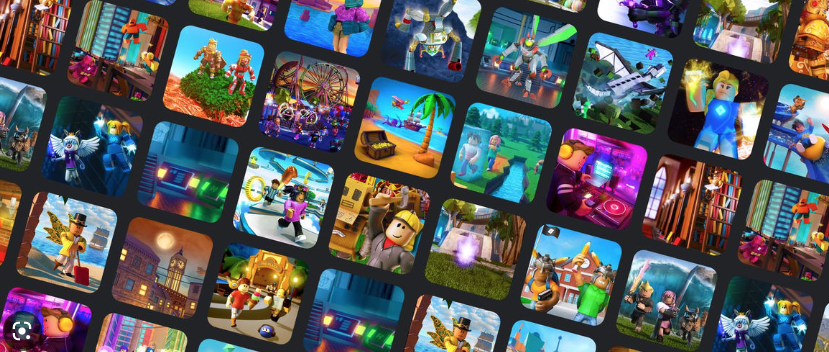Enter the Metaverse: A New Way to Connect, Collaborate, and Create
How to begin with metaverse?

What is the metaverse?
Metaverse is the collective virtual shared space, created by the convergence of virtually enhanced physical reality and physically persistent virtual space, including the sum of all virtual worlds, augmented reality, and the internet. The term was coined by Neal Stephenson, author of the science fiction novel Snow Crash.
In simple terms, the metaverse is a virtual world that is accessible through the internet and can be experienced in a similar way to the physical world. It is a place where people can interact with each other and with virtual objects and environments in real time. The metaverse has the potential to revolutionize the way we live and work, offering new ways for people to communicate, collaborate, and create. It can bring together people from all over the world and enable them to connect and interact in previously impossible ways. The metaverse is still in its early stages of development, but it is already being used in various ways. For example, some companies use virtual reality (VR) and augmented reality (AR) to train employees, while others use the metaverse to host virtual events and conferences. Games and other entertainment experiences are also being developed for the metaverse.
One of the most exciting aspects of the metaverse is its potential for education. It offers a new way for students how to learn and for teachers how to teach, enabling a more immersive and interactive learning experience. The metaverse is also being explored to connect people in remote or isolated locations, allowing them to participate in activities and events that would otherwise be out of reach. The future of the metaverse is still being written, but it is clear that it has the potential to be a transformative technology that will have a significant impact on how we live and work.
What did Neal Stephenson envision under his title, Metaverse?
Thirty years ago, Neal Stephenson described today’s technology with frightening accuracy in his science fiction novel. He introduced metaverse, digital currencies, and AI-powered assistants.
Snow Crash told the story of Hiro protagonist, a katana-wielding hacker who bounced back and forth between a dystopian Los Angeles and a virtual world called the Metaverse. Read More

Centralised and Decentralised Metaverses
Centralised metaverse Web2
This type of metaverse operates in a centralised system where a central organisation controls access to user data. This metaverse is not connected to a blockchain. This type of metaverse has the most users and is suitable for brands looking for a place to build their user network.
Centralised metaverse Web3
This type of metaverse operates with crypto payments, where a third party controls access to user data. These systems can also have NFTs that can be traded or exchanged. Examples of this include Earth2 or the Meta metaverse.
Decentralised metaverse Web3 Blockchain
The administration of the virtual world is handled directly by users. Rules are created using smart contracts. This type of metaverse is governed by a decentralised autonomous organisation (DAO) system. It is possible to design and develop a virtual economy here, considered the most successful form among all metaverses. On these platforms, users can most commonly monetise their creations in NFTs for the appropriate currency („Create-to-earn“), earn tokens or cryptocurrencies while playing („Play-to-earn“ – examples include Sandbox, Axie Infinity), or own and sell plots of land (Own & Trade – example: Decentraland). Here collaborators or users feel part of the ecosystem, with the user being more of a creator than a consumer exposed to content.
Blockchain is a decentralized digital ledger that records transactions across a computer network. It allows for creating a secure and transparent record of transactions without the need for a central authority.
DAO, or decentralized autonomous organization, is a type of organization that is run using blockchain technology and smart contracts. It is decentralized in that any single individual or organization does not control it but instead is governed by a set of rules encoded in smart contracts.
Smart contracts are self-executing contracts with the terms of the agreement between buyer and seller being directly written into lines of code. The code and the deals contained therein are stored and replicated on a blockchain network. In the context of the metaverse, smart contracts can facilitate transactions and interactions between users, such as buying and selling virtual real estate or other virtual assets.
NFTs, or non-fungible tokens, are unique digital assets and cannot be replaced with other assets. They often represent virtual items or assets in the metaverse, such as virtual real estate or digital art.
Types of metaverses based on focusing
Metaverses can be categorized based on their direction, purpose, and the types of activities and experiences they offer.
Gaming metaverses: These are virtual worlds explicitly designed for playing games, where users can play games, participate in tournaments, and communicate with other players.
Social metaverses: These are virtual environments designed for socialization and connection with others, such as virtual bars or clubs.
Educational and training metaverses: These are virtual environments designed for learning and practising new skills, such as virtual classrooms or training simulations.
Event and entertainment metaverses: These are virtual environments designed for hosting events and experiences, such as concerts or sports games.
Workplace metaverses: These are virtual environments designed for remote work and collaboration, which allow users to hold meetings, work on projects, and communicate with colleagues in a virtual environment.
Virtual tourism metaverses: These are virtual environments designed to allow users to explore and experience virtual representations of places in the real world.
Mixed reality metaverses: These virtual environments combine elements of virtual and augmented reality and allow users to experience virtual features and interact with them in the real world.
Overall, the type of metaverse will depend on the focus and purpose of the virtual environment and the types of activities and experiences it offers to users.

Stores and services in the metaverse
In the metaverse, brands have the opportunity to create virtual storefronts or shop fronts where they can sell their products to users. These virtual storefronts can be designed to mimic physical retail spaces or can take on entirely unique and creative forms. Brands can also use the metaverse to host virtual events, such as fashion shows or product launches, where they can showcase their products to a wide audience.
In addition to selling physical goods, brands can also sell digital products and services in the metaverse. These can include virtual clothing and accessories for avatars, virtual experiences or activities, and even virtual real estate.
One key benefit of selling goods in the metaverse is the ability to reach a global audience. Users from anywhere in the world can visit a brand’s virtual storefront and make purchases, eliminating the need for physical storefronts in multiple locations. Brands can also leverage the immersive nature of the metaverse to create engaging and interactive shopping experiences for their customers.
Overall, the metaverse offers exciting new opportunities for brands to sell goods and connect with consumers in a virtual setting.

Who Are Metaverse Stakeholders?
Stakeholders in a metaverse can include the creators and developers of the metaverse, users or residents who participate in the metaverse, businesses that operate within the metaverse, educational institutions, and any organizations or entities that have a vested interest in the metaverse.
Some specific examples of stakeholders in a metaverse might include:
- The creators and developers of the metaverse invest time, money, and resources into building and maintaining the metaverse.
- Users or residents of the metaverse may spend significant amounts of time within the metaverse and may have a strong emotional connection to it.
- Businesses that operate within the metaverse, such as virtual stores or other virtual services. These businesses may have a financial stake in the success of the metaverse and may depend on it for their livelihood.
- Educational institutions, such as schools, colleges, and universities, which may use the metaverse for virtual learning and education, and may have a vested interest in the success and sustainability of the metaverse. Educational institutions may also be involved in the development or operation of a metaverse, either as a collaboration with other institutions or as an independent project.
- Investors or other financial stakeholders who have invested in the development or operation of the metaverse.
- Governments or other regulatory bodies may have an interest in the operation of the metaverse, particularly if it is being used for commercial purposes.It is essential for all stakeholders in a metaverse to work together to ensure the success and sustainability of the virtual shared space.

VR & AR
Virtual reality (VR) and augmented reality (AR) are technologies often used to develop and operate metaverses.
Virtual reality is a computer-generated simulation of a three-dimensional environment that can be interacted with in a seemingly natural or physical way by a person using a VR headset or other device. VR can be used to create immersive experiences in a wholly digital environment, such as a video game or virtual world.
Augmented reality is a technology that superimposes digital information onto the real world, often through a smartphone or other device with a camera. AR can be used to enhance the real world with digital elements, such as virtual objects or information overlays.
Both VR and AR can be used in metaverses to create immersive and interactive user experiences. For example, a metaverse may use VR technology to allow users to fully immerse themselves in a virtual world and interact with it using VR controllers. In contrast, an AR metaverse may use AR technology to allow users to see and interact with virtual elements in the real world through their smartphone or another device.
Overall, using VR and AR in metaverses can help create more immersive and interactive user experiences and be a vital component of the virtual shared space.
Mixed Reality (MR)
Mixed reality (MR) is a term that refers to a hybrid of virtual reality (VR) and augmented reality (AR). While VR creates an entirely computer-generated environment that users can interact with, and AR overlays digital information onto the user’s view of the real world, mixed reality combines elements of both to create an environment where digital and physical objects coexist and interact in real-time.
One example of mixed reality technology is the Microsoft HoloLens, which is a head-mounted display that can project virtual objects onto the user’s view of the real world. This allows users to see and interact with digital objects as if they were real, physical objects. Another example is the Magic Leap One, which is a mixed reality headset that uses a combination of cameras, sensors, and projection technology to create a similar experience.
There are many potential applications for mixed reality technology, including education, training, design, and gaming. For example, mixed reality can create interactive and immersive learning experiences in education. Mixed reality can simulate real-world scenarios in training, allowing employees to practice procedures and skills in a safe and controlled environment. Mixed reality can be used in design to visualize and iterate on designs, while in gaming, mixed reality can be used to create more immersive and interactive experiences.

How to begin?
There are several steps you can take to begin exploring and participating in a metaverse:
- Research different metaverses: Many different metaverses are available, each with unique features and activities. Research and compare different metaverses to find one that aligns with your interests and goals. Here are some examples: Spatial, Decentraland, Sandbox, Roblox
- Set up the necessary hardware and software: Depending on your metaverse, you may need to set up specific hardware and software to access and participate in the virtual shared space. This may include things like a VR headset, AR device, or specific computer or smartphone requirements.
- Create an account and profile: Most metaverses require you to create an account and profile to access and participate in the virtual shared space. Follow the instructions provided by the metaverse to set up your account and profile.
- Explore the metaverse and its features: Once you have set up your account and profile, you can begin exploring it. This may include chatting with other users, participating in games or events, or exploring virtual environments.
- Follow the rules and guidelines of the metaverse: Each has its own set of rules and guidelines for behaviour and conduct. Be sure to familiarize yourself with these rules and follow them to have a positive experience in the metaverse.
- Follow our articles, interviews and tutorial videos and embark on the journey to the metaverse with us. We recommend subscribing to receive news. You can also visit our metaverse and follow us on Spatial.io. And give us a like if you like it.





